.png)
Timely (vchasno.ua) provides cloud document management services for over 500k companies. However, some clients require a more flexible team signing process, which is not adequately supported by the existing system. This results in the need for workarounds and impacts the user experience. Additionally, the current approach limits the number of active users, affecting the service's subscription rates.
The current collective document signing functionality lacks options for department-specific or selective employee signing. Users resort to setting up tags and using a single account for signing, leading to inefficiencies and potential confusion. The challenge is to enhance the functionality without disrupting the current business logic.

Product Designer in a 4-member Product Design team.
Nov - Dec 2022.
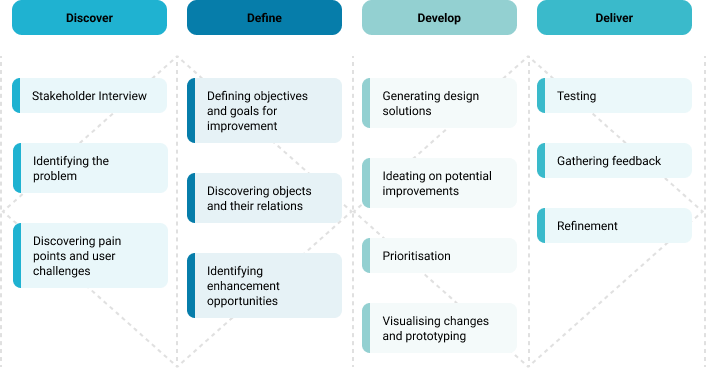
Due to the complexity of the Timely application, a different research approach was adopted. The design process began with an analysis of the product architecture, dissecting the application into its core components, such as objects, data arrays, classes, properties, methods, data types, and access roles. This allowed for a comprehensive understanding of the service's complexity.
OOUX (Object-Oriented UX): This information architecture methodology helped break down the interface into its constituent parts, providing insights into the service's intricacies.
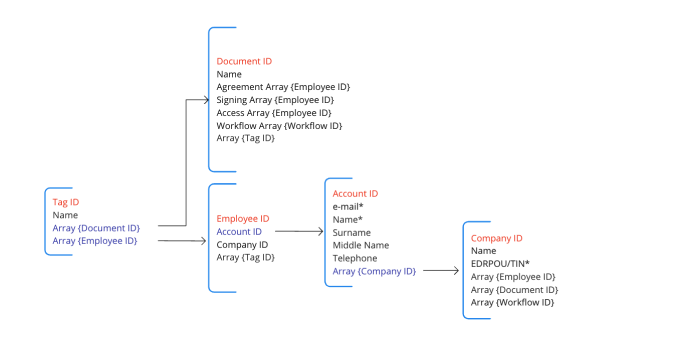
Business Process Model and Notation (BPMN) Diagrams: These diagrams visually represented the document routing, approval, and signing processes within and outside the company. They aided in identifying processes and their triggers.
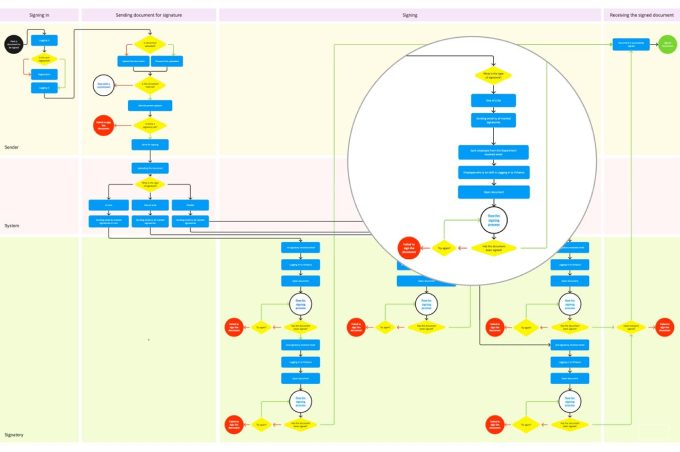
Ideation involved brainstorming sessions where we framed questions as "How might we..." statements. The ideas were then prioritized based on their difficulty of implementation and effectiveness. Considering the existing investment in tag functionality, we focused on enhancing this feature for users.
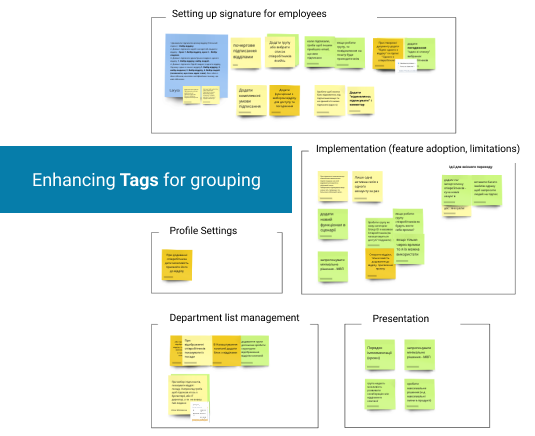
Our proposed solutions comprised incremental changes that were both feasible for the development team and easy for users to adopt.
Usability testing: The respondents immediately recognised that one can search and add Departments using tags.
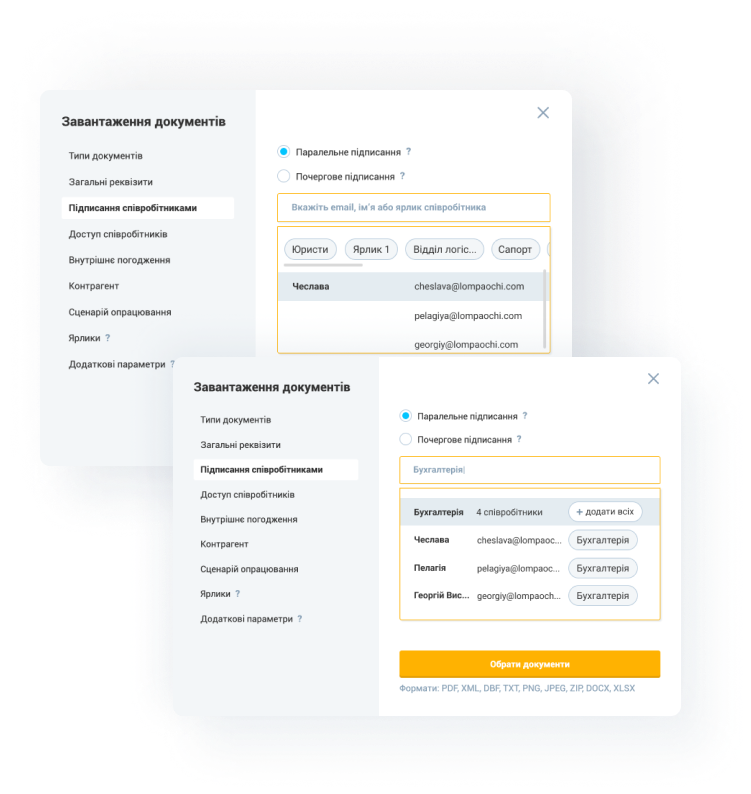
Enabled users to assign signatories based on a "one of a list" logic during document workflow setup.
Usability testing: The respondents were able to quickly choose the type of workflow
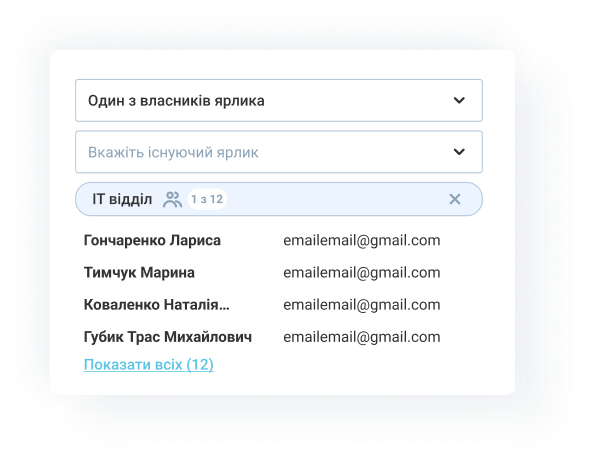
Introduced more complex document workflows, accommodating scenarios such as "signature by selected individuals, followed by someone from a chosen department."
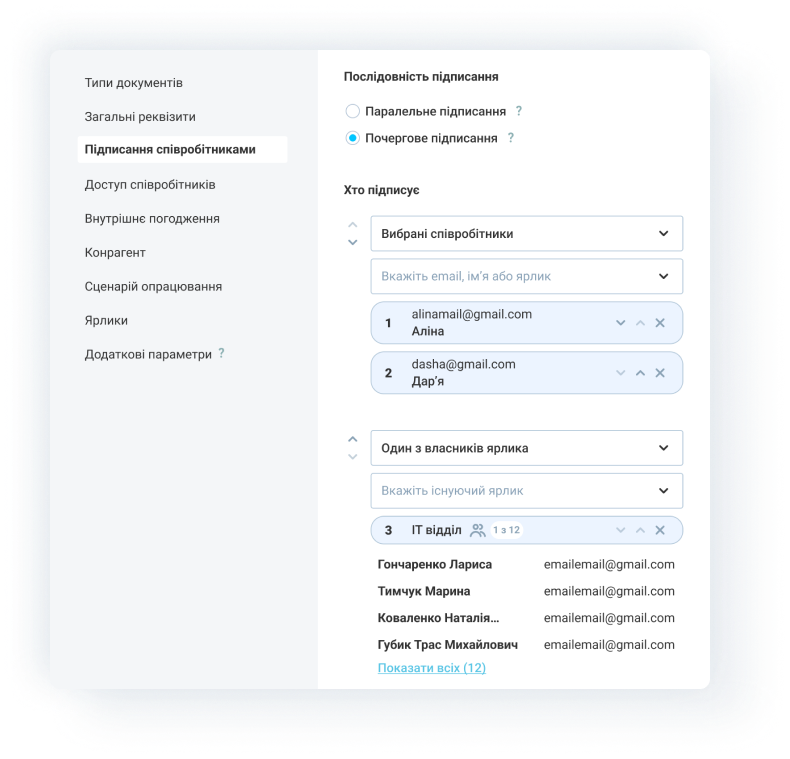
To ensure successful adoption of the new features, we suggested the following strategies:
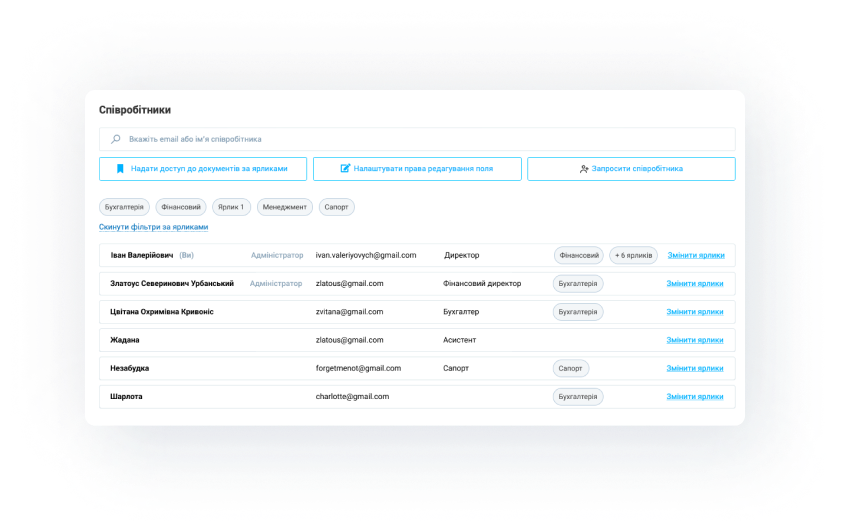
After several months of collaborative work, our solution was highly regarded during the final client presentation. Our lean approach and improvement of an existing feature impressed the client. We anticipate that our solutions will be further developed and implemented in the near future.